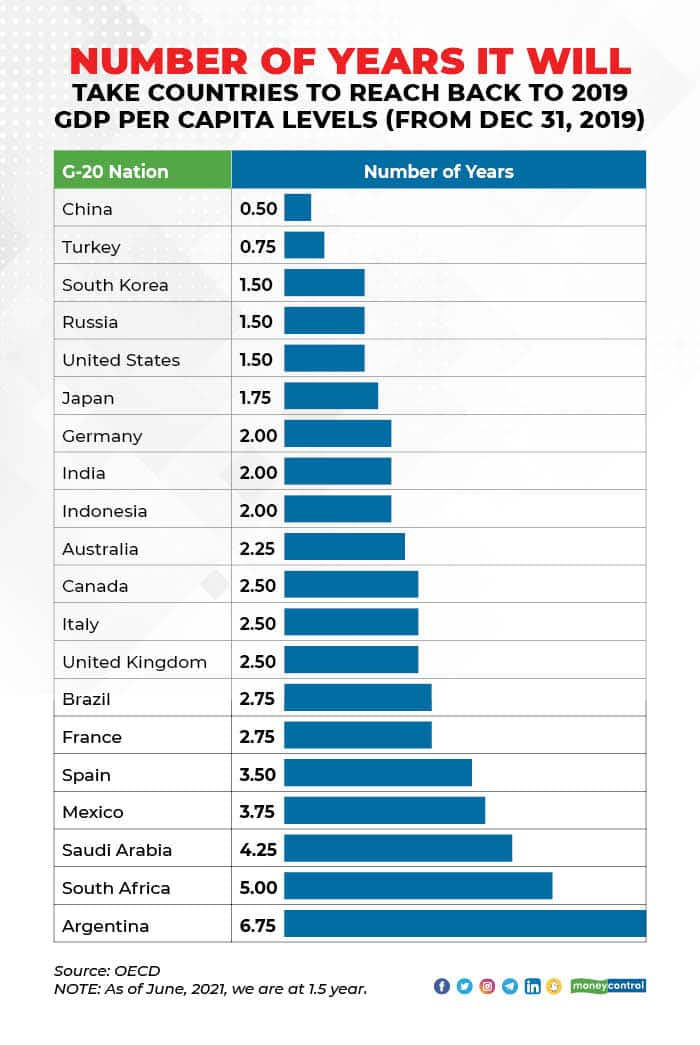India’s per Capita GDP to reach 2019 levels in 6 months: OECD has said.
Despite being hit by a devastating second wave of the COVID-19 pandemic, India will reach back to its 2019 calendar year gross domestic product per capita levels by the end of 2021. This is as per the latest data by the Organization for Economic Cooperation and Development.
The OECD has mapped the time it will take for G-20 nations to reach their own GDP-per capita levels before the COVID-19 pandemic. It takes a base of per-capita GDP as on December 31, 2019.
As per the data, China, Turkey, South Korea, Russia and the United States have already reached their pre-pandemic GDP levels as of June 1, 2021. Germany, India and Indonesia will reach those levels by the end of this year, while a host of other countries including Saudi Arabia, Britain, Brazil, and France will take longer.
South Africa and Argentina will take the longest to reach their December 2019 per-capita GDP levels, at five years and 6.75 years respectively.
As per the GDP data released by the National Statistical Office on May 31, India's real per-capita GDP for 2020-21 fiscal year fell 8.2 percent, compared with a 3 percent rise in 2019-20.
